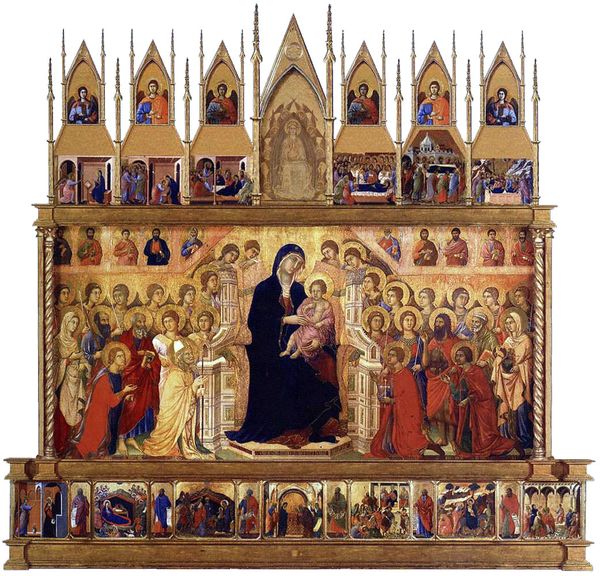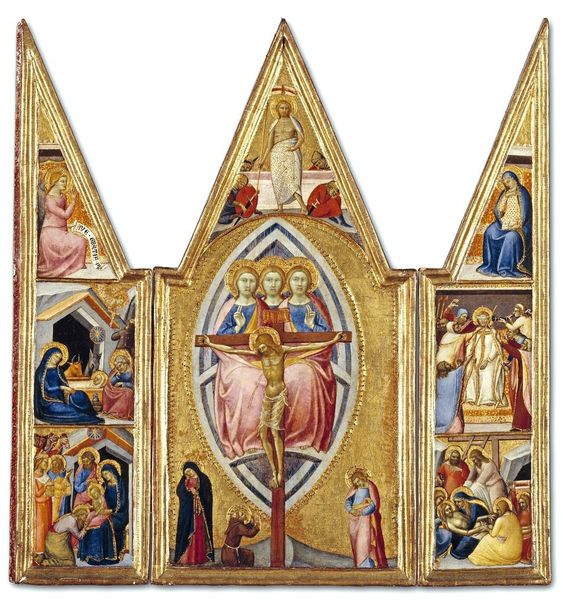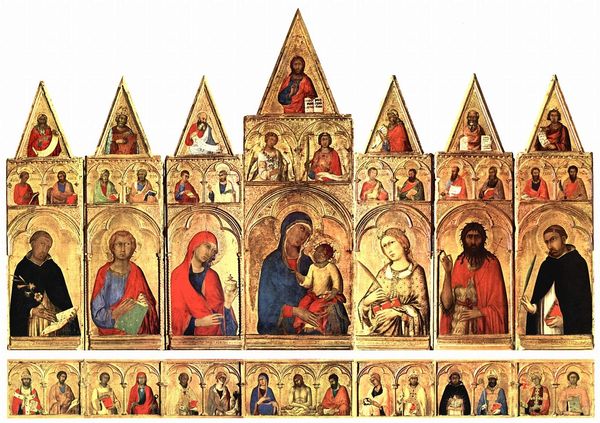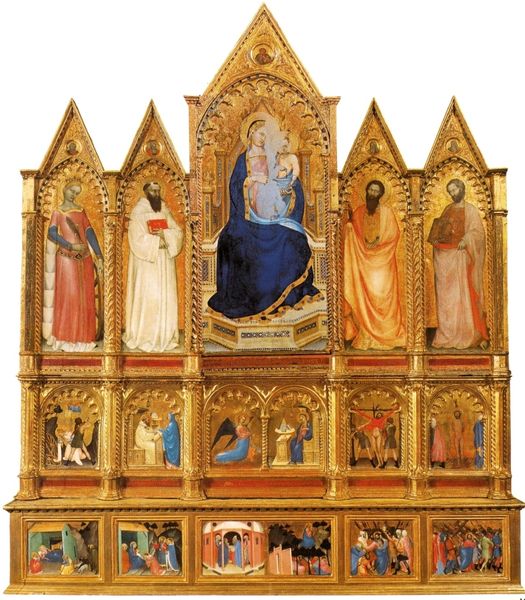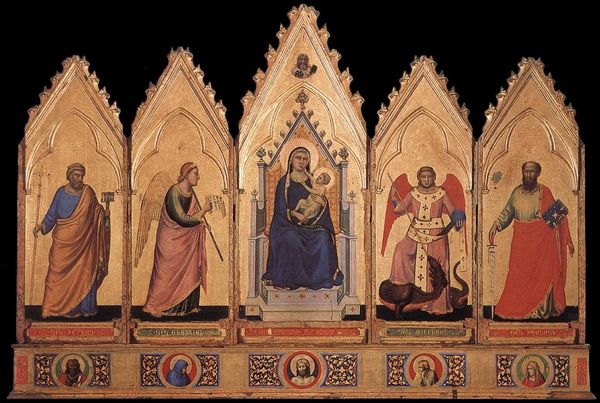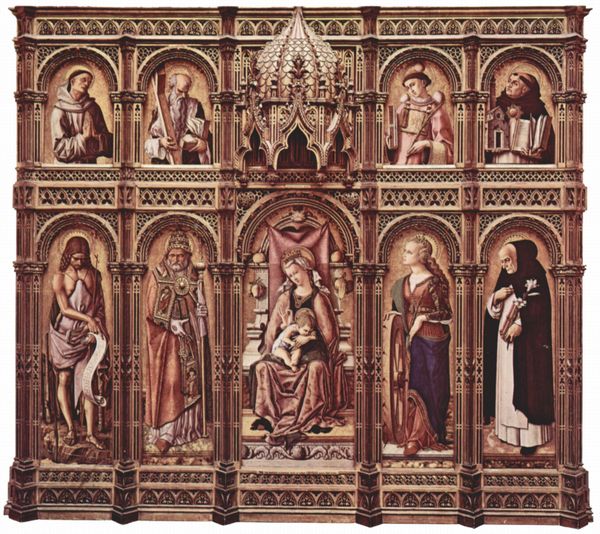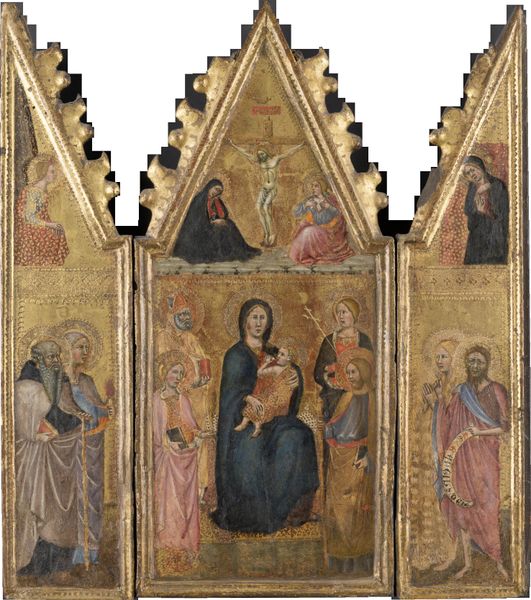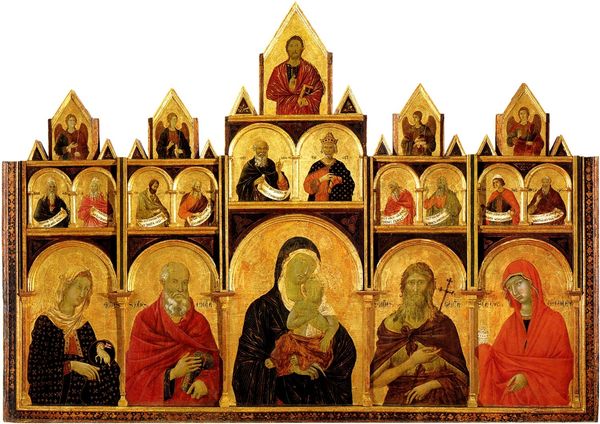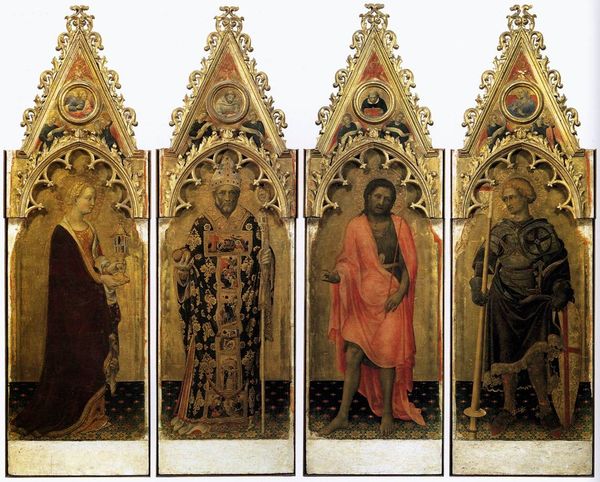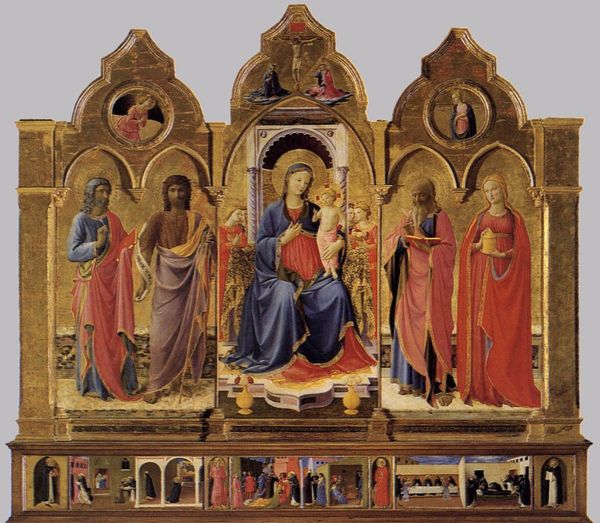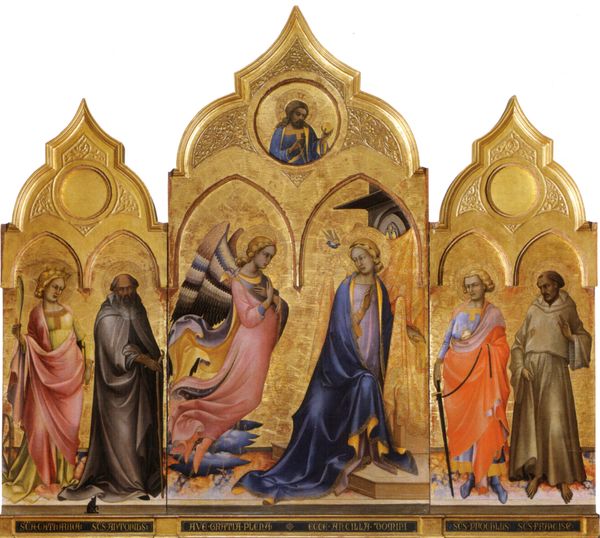
tempera, painting
#
narrative-art
#
tempera
#
painting
#
figuration
#
history-painting
#
italian-renaissance
#
early-renaissance
Copyright: Public domain
Editor: This is a reconstruction of Giovanni da Milano's Ognissanti Polyptych, a tempera painting from the Italian Renaissance. It strikes me how modular it is, almost like a set of individual devotional images brought together. What do you see when you look at it? Curator: I'm immediately drawn to how this polyptych, even in reconstruction, speaks to the socio-political role of art in its time. These weren’t merely aesthetic objects; they were powerful tools for shaping public belief and reinforcing social hierarchies. Editor: Social hierarchies? Curator: Absolutely. Consider the prominent placement of religious figures and saints, elevated both literally and figuratively through artistic skill. What do you think that communicates to the viewers of that time? Editor: It does seem to place religious figures at the top. It highlights their importance...and maybe, through that, the importance of the church itself? Curator: Precisely. And think about who commissioned and funded these pieces: wealthy patrons, religious institutions... Their stories were visually represented here. Art was less a personal expression and more a carefully managed tool of public relations, would you agree? Editor: That makes sense. It feels less about the artist's personal vision and more about reinforcing established power. I guess I hadn't considered the public's reaction beyond the immediate religious context. Curator: Exactly! Considering its history shifts our understanding of what it *means* as opposed to what it *shows*. Editor: This reconstruction really underscores how polyptychs served not only as art but as visual tools reinforcing a particular world order. Curator: Precisely, it makes you wonder how it looked originally and where it hung. Context truly changes the lens through which we view art.
Comments
No comments
Be the first to comment and join the conversation on the ultimate creative platform.
